Common organizational business structures and processes are multifactorial and complex, consisting of multiple processes. This paper will seek to explore the key processes including finance, procurement, fulfillment, inventory and warehouse management, and manufacturing that involved in business functionality. The overview will examine purpose, activities, and organizational elements as well as the enterprise resource planning systems appropriate to each category.
The Finance Process
All businesses operate on cash flow in one way or another, making the finance process essentially critical to every type of organization. The finance process is overseen by the finance department which oversees the procurement, management, and spending of funds and assets ensuring that the business has available cash and sustainable flow of income versus expenses. The primary responsibility of financing is general accounting which oversees daily expenditure, record-keeping, and financial management such as bookkeeping, payroll, and financial statement preparation (Gartenstein, 2019). The finance process also includes financial controls which includes strategic and long-term decisions, which may involve upper management as well. These responsibilities include planning and ensuring that the budget is followed. Management of long-term responsibilities such as investments, taxes, and financial risks are critical to financial control to guarantee the fiscal health of a company (AccountingEducation, n.d.).
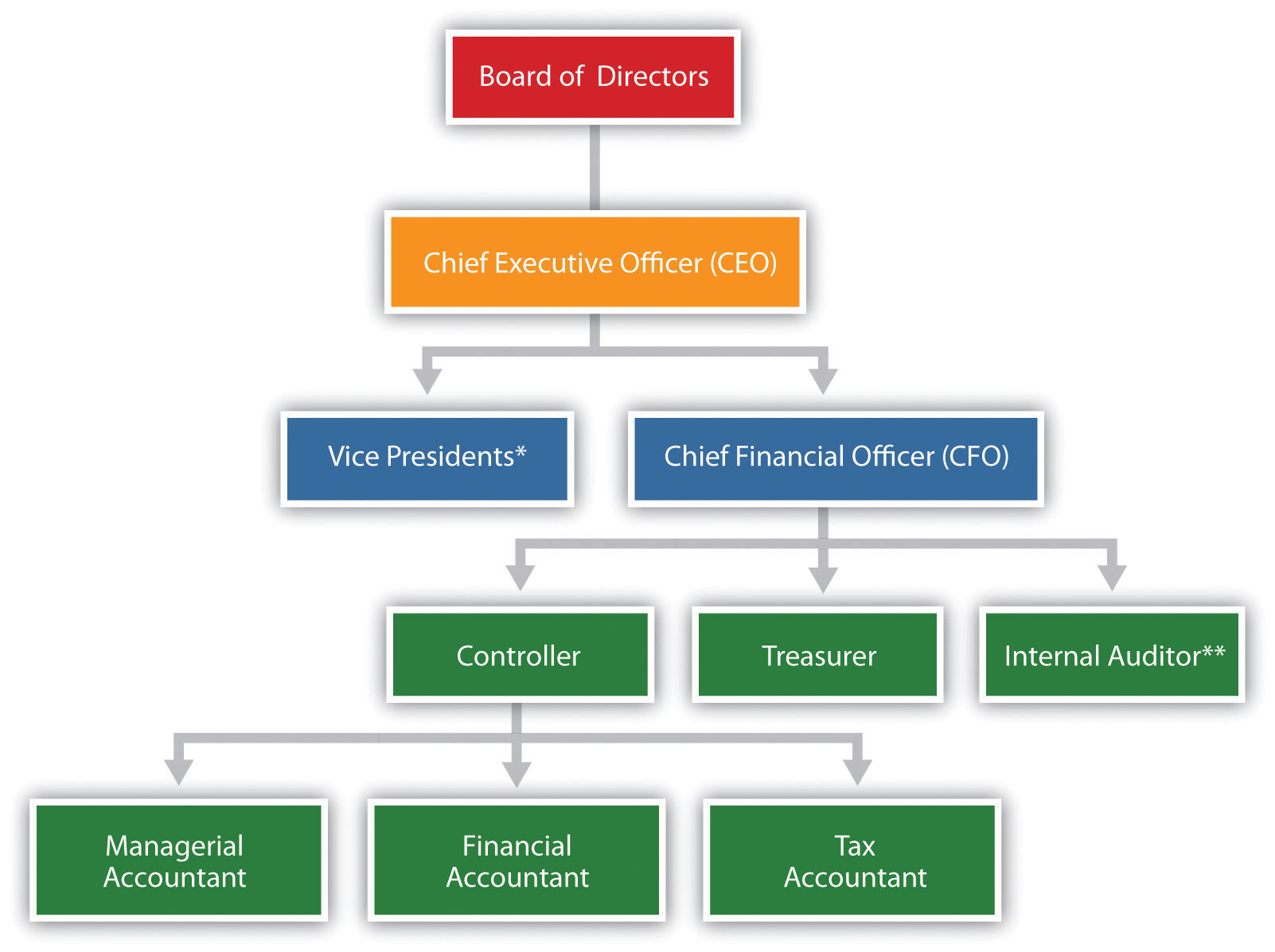
As seen in the chart above, the chief financial officer (CFO) of a company typically oversees organization’s finances and accounting functions, reporting directly to the CEO (“Managerial accounting,” 2012). The finance process ultimately begins with strategic planning when the long-term objectives of a company are determined and financed. A financial plan must be created and implemented to ensure both day-to-day functionalities and long-term financing needs are met (Gartenstein, 2019). ERP processes can significantly simplify and improve efficiency of multiple financial activities. First, the accounting procedures are automated through ERP software which improves financial productivity. Various accounting procedures such as management of payments to vendors and wages to staff are automated. Another way that ERP benefits organizations is accuracy and reliability of data, keeping track of all financial transactions, and compiling it in line with standards (Roehl-Anderson, 2010). This allows for finance departments to concentrate more on core operations and strategic planning while automating the tedious processes.
The Procurement Process
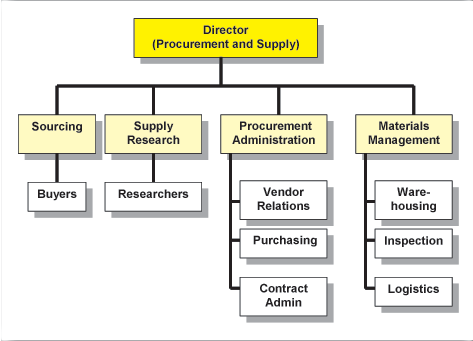
Procurement in an organization is a series of activities and processes to acquire necessary products, goods, and services for operations from the best suppliers at the optimal price. Modern supply chains make procurement management a strategic function of integrating internal and external resources, control of risks, and operational function in lower costs. With the development of complex supply chains, companies outsource in order to implement strategies, highlighting the importance of suppliers. Therefore, the core of procurement management is extensive ranging from order processing to managing external sources of supply. Firms seeks to acquire resources with the most optimal cost, schedule, quality, and quantity via activities such as resource development, supplier selection and qualification, and supplier relationship (Jiang, 2017).
The role of procurement is broad, encompassing market analysis, supplier negotiations, transport and logistics, storage and warehousing, and procurement technologies among others. Responsibilities may include identification of requirements for goods, materials, and services – the point where the procurement process ultimately begins. This is followed by identifying reliable suppliers, price negotiations, delivery terms comparison. Finally, there is the establishing order quantities, coordinating delivery, product and quality control (Procurement Practitioner’s Handbook, 2012). Furthermore, procurement department also has to manage budgets and payments, in coordination with the financial department. There are two elements to procurement, strategic and operational procurement. Operational procurement focuses on administrative aspects, day-to-day operations, and short-term or repeating tasks in the process of ordering, invoicing, and receiving inventory. Strategic procurement is focused on planning high-level decision-making and tasks that are related to such activities. Furthermore, the department can set an overall direction and strategy to meet the company’s needs and possibilities, as well as evaluate and form long-term relationships with suppliers (Ho, 2009).
ERP is commonly utilized in procurement activities to manage the process, oversee budgets, and track spending. ERP optimizes many elements of the process by automation, with common and consistent orders being placed automatically as well as purchase planning for tracking of inventory data for accurate ordering. ERP technology can aid in boosting profit margins by connecting business processes with accounting as well as intelligently comparing data from suppliers including details of transactions and delivery results (Pinto & Morris, 2007). Overall, the elimination of manual processes can aid in efficiency and improve insight to the process.
The Fulfillment Process
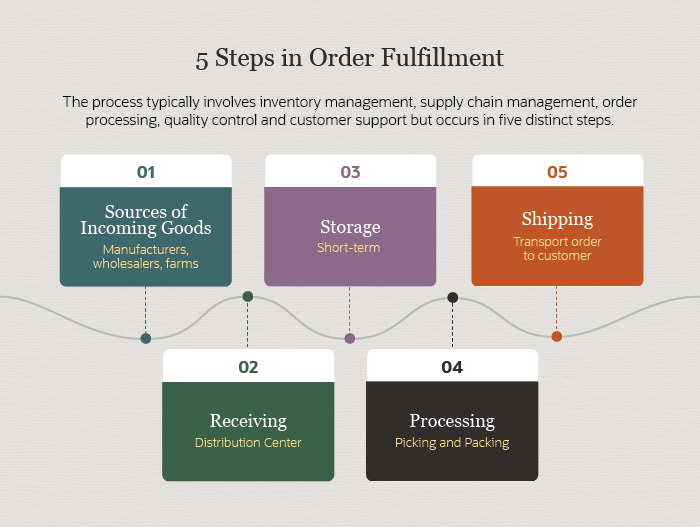
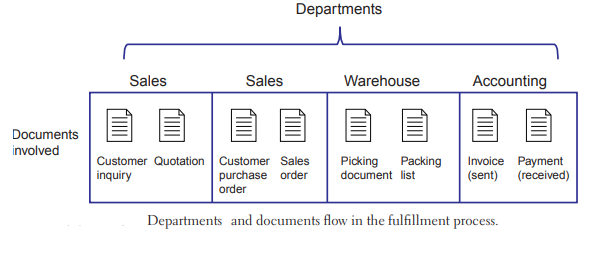
ERP software can have significant impacts on the fulfillment process by creating efficient workflows from the warehouse to customer deliver. These workflows may include quote-to-quote order, order-to-fulfillment, and invoice-to-payment – becoming efficient through automatization and removing redundancies. Examples include software being integrated with delivery services to automatically determine freight charges and calculate costs. The picking process can be expedited as well as distributors may choose to purchase the product in bulk but sell individually, with the ERP system converting measurements and organizing pick sequences. The returns process will benefit as well with the software tracking which items have been returned and the cause, contributing to quality control (FullQuota Editor, 2013).
The Inventory and Warehouse Management Process (IWM)
Inventory and warehouse management is an umbrella term encompassing everything that occurs in an organization’s storage location, most commonly a warehouse, and the primary activity includes the managing of inventory but can be much more expansive. Inventory can be defined as goods that a business owns and plans to either sell or use for a manufacturing process. Inventory is considered an asset, recorded on the balance sheet and constantly evaluated. Tracking and management of inventory is critical for success for the company as it engages in business and moves the inventory. Inventory and warehouse management is the most complex element of a supply chain, including activities ranging from fulfilling and shipping orders, distribution, maintaining track and quality of inventory, manage transportation, analyzing logistics and customer needs among many others that can be seen in the chart below. The objective of any inventory and warehouse management process is to “enable quick response to the custom and highly-accelerated inventory flow” (Schmula, 2010).
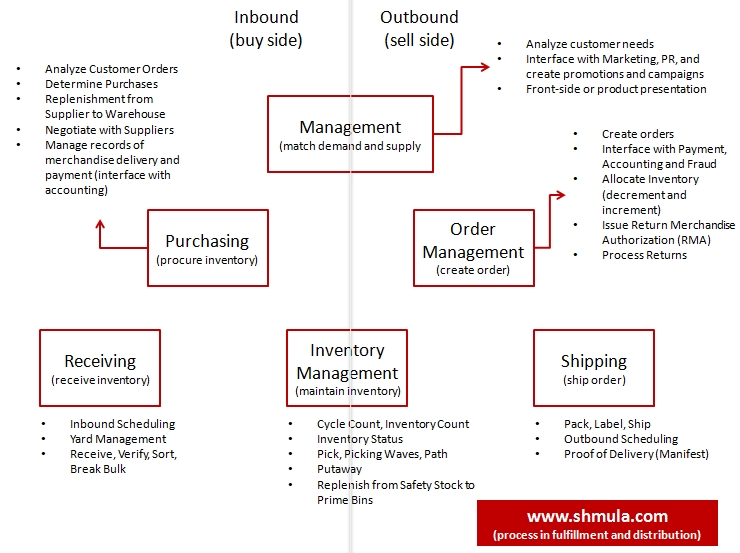
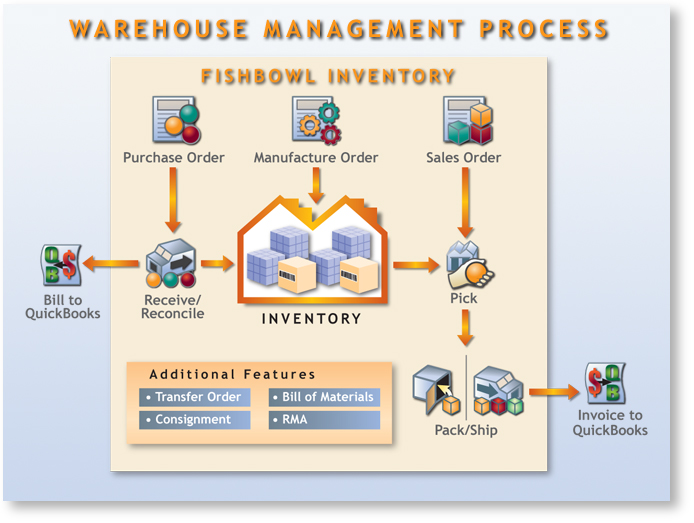
ERB such as a warehouse management system (WMS) software are highly necessary and have become the cornerstone of the logistics process. WMS helps to configure and manage elements of storage, distribution, and shipping with operations such overseeing inventory balance, material management, pickup processes and auditing. The software aids in making vital processes efficient including maintaining accuracy of inventory with real-time information and benefit of other technologies such as barcode or RFID that accurately track inventory levels, to leverage business operations or seasonal demand in centralized manner to avoid any potential gaps in stock (Lahoti, 2018).
The Manufacturing Process
The manufacturing process are steps when raw materials transformed into the final product. When manufacturing beings, a company has the choice as to the type of manufacturing process it uses, which can vary depending on resources, staff, and information systems it has available. Furthermore, manufacturing process varies depending on final product, whether it is large batches of similar goods or small numbers of custom or complex items. More manufacturing processes typically utilize a production line, with the product moved sequentially along the line and worked upon at specific stations where operations are performed as it is gradually assembled by humans or machines. Other manufacturing processes include continuous flow, custom manufacturing, and fixed position manufacturing (Murray, 2018). Manufacturing typically begins with either orders being placed or a business needing to fill its inventory.
As seen in the organizational chart below, manufacturing represents a major element of an organization. It consists of various sub-elements including production planning, technical design, production, quality assurance, and equipment maintenance. Commonly the manufacturing department works closely with sales and procurement departments to determine orders as well as inventory management where raw materials are stored and completed goods go into inventory. There is cooperation with technical departments that create the product designs and conduct research and development that directly affects the manufacturing process.
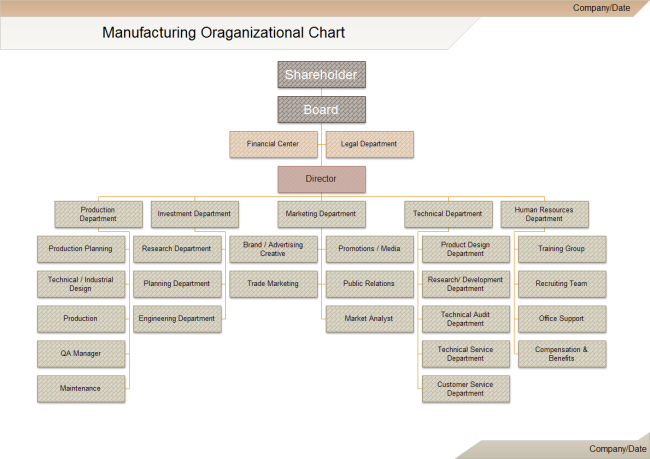
ERP and IT systems are essential in the modern, highly automated manufacturing process for businesses. Experts agree that digital and automated manufacturing operations are key to succeeding in the challenging market. Systems such as the Manufacturing Execution System (MES) offers certain benefits such as centralized management of systems, comprehensive data collection to eliminate redundancies and improve quality, and introducing integrate manufacturing operations management digitally. Manufacturing thrives on efficiency, ranging from speed of output to energy monitoring to equipment effectiveness, all of which are possible through the industrial Internet of Things and other IT tools for business analytics (SAP, n.d.).
References
AccountingEducation. (n.d.). Function of finance department. Web.
BSE Logistics. (n.d.). Warehouse management. Web.
Edraw. (n.d.). Manufacturing organizational charts. Web.
FullQuota Editor. (2013). Is ERP distribution software the key to speeding up order fulfillment? Web.
Gartenstein, D. (2019). What roles does the finance department play in a business. Web.
Ho, S. (2009). BLC 304/05 procurement management. Wawasan Open University. Web.
Jiang, Z. (2017). Procurement management in the supply chain environment: Practical guide to understanding procurement management and enhancing procurement effectiveness and efficiency. Chartridge Books Oxford.
Koppelman, L. (2020). What is order fulfillment. Web.
Lahoti, N. (2018). Warehouse management system – Role and functions in logistics chain. Web.
Managerial accounting. (2012). Saylor Academy. Web.
Murray, M. (2018). A guide to the manufacturing production process. The Balance Small Business.
Pandey, A. (2019). The order fulfillment process. Web.
Pinto, J. K., & Morris, P. G. (2007). The Wiley guide to project technology, supply chain, and procurement management. Wiley
Roehl-Anderson, J. M. (2010). IT best practices for financial managers. Wiley.
SAP. (n.d.). Manufacturing.
Schwartz, L. (2020). What is order fulfillment? Process & strategies. Web.
Shmula (2012), Warehouse management processes. Web.